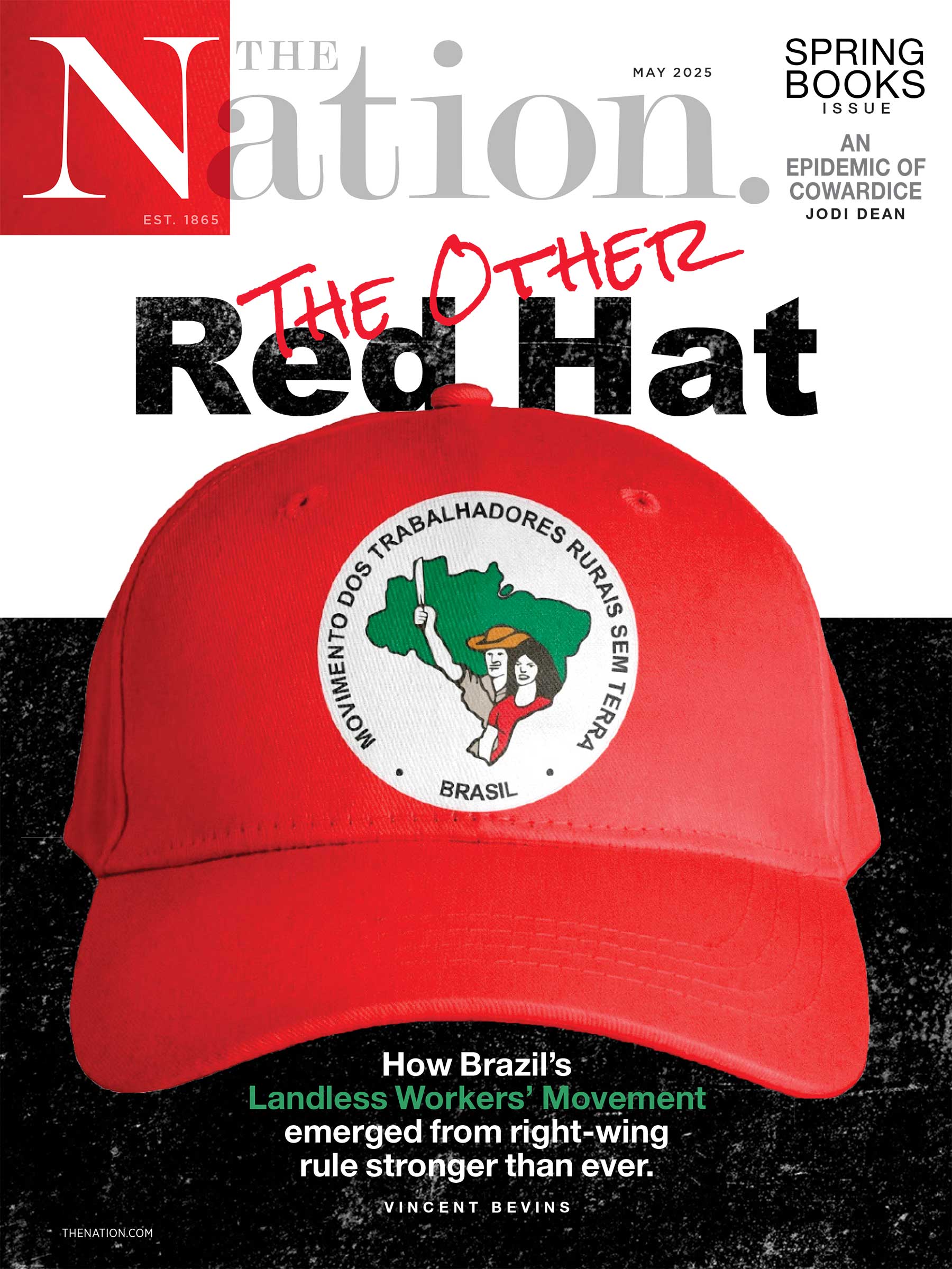The Story of Sakinah Ahad Shannon, an Early Hero of Abortion Liberation
Sakinah discovered Chicago’s Abortion Counseling Service, better known as Jane, because she wanted to help a friend. Then she became an essential part of it.
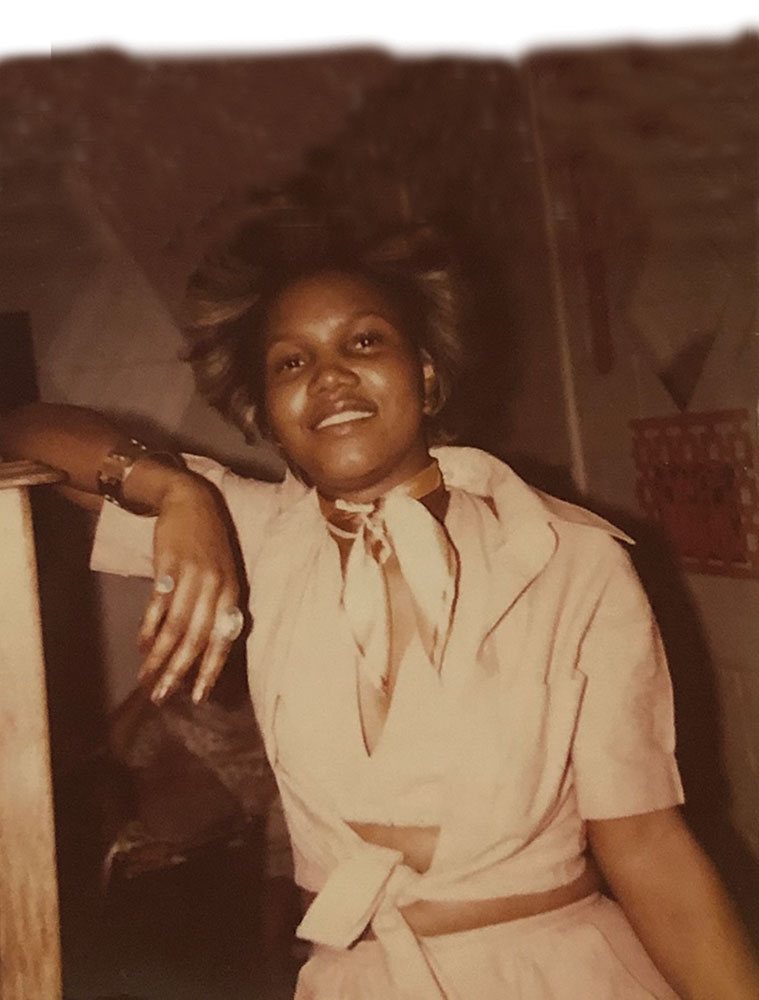
When Sakinah Ahad Shannon found Jane in 1971, she was looking to help a childhood friend who needed an abortion. Sakinah, who went by Paulette Myers at that time, started asking around to find a safe abortion provider. “I put feelers out. I got a call from one of my other friends who had went to Jane, and she says, ‘Listen, I went to the women there, it’s wonderful. I only paid $50.’”
Jane, also sometimes called The Service, was the colloquial name for the underground Abortion Counseling Service of the Chicago Women’s Liberation Union. Founded in 1969, it consisted of a group of women who connected people seeking abortions to providers. Until it disbanded in 1973, Jane helped more than 11,000 women get abortions at a time when the procedure was illegal in most of the states.
Sakinah was aware of the risks. She had heard about women using coat hangers to cause abortions and then dying in Cook County Hospital’s septic ward because of an infection. So after double-checking that her friend wanted her to call Jane—her friend replied that she trusted Sakinah with her life and her babies’ lives and therefore trusted her on this—Sakinah, who is Black, had one warning to pass on: “I want you to know it’s Caucasian women.”
Sakinah remembers the day vividly. She wore a colorful top with bell-bottom pants and her hair picked out to a perfect ‘fro. The two women took the L train from the North Side to The Front, the South Side home where clients were gathering that day before their appointments. Diane, a Jane member, was doing counseling, and she sat with Sakinah and her friend to explain the entire process—the medicines they would use, the tools, who else would be there—and then prepped her friend to travel to The Place, the house or apartment where she and other women would have their abortions that day.
Sakinah waited at The Front with the other women, biding her time. A young woman of color, about 16 or 17 years old, approached her, asking, “What do I do next?” Sakinah was confused. She wasn’t a Jane, but because she was a Black woman, the young girl assumed she could help her. Sakinah explained that she was there with a friend, not as a counselor, and then directed her to check in with the Janes. This moment was an epiphany for Sakinah: “My mind is racing, still thinking about my girlfriend, praying that she’s safe, but also thinking, ‘Really? Are we [Black women] at this point in our life that we’re not involved?’”
A bit later, Sakinah’s friend returned from her appointment, unpregnant, sharing how wonderful and nice the experience was. Sakinah was moved. The memory of the young woman who needed help navigating the experience stuck with her. “I had it set in my mind and said, ‘OK, I know this is illegal,’ but it’s something that I needed. I felt a responsibility to my sisters. I felt this deep debt and responsibility.” So she went up to Diane and asked what she could do to help. Diane promised to call her soon.
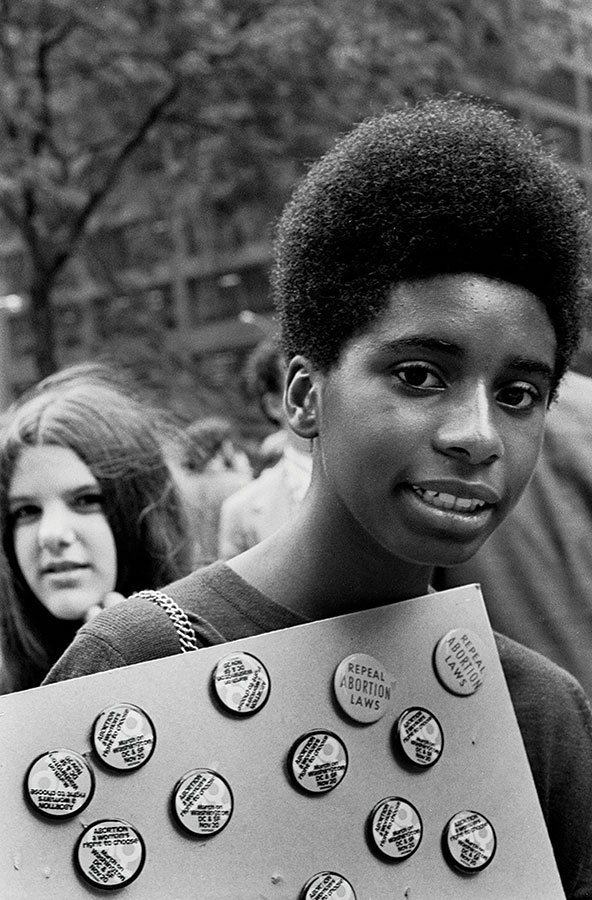
Jane was not Sakinah’s first encounter with community organizing. She had organized in the late 1960s for Black liberation and idolized the teachings of Malcolm X. While her older sister Lois was involved with the Congress of Racial Equality (CORE) and attended the 1963 March on Washington, and her cousin organized with the Student Nonviolent Coordinating Committee (SNCC), Sakinah was less interested in nonviolent protest.
“You guys are talking about turning the other cheek, but that’s not gonna work for me,” she explained. Malcolm X’s call for militancy—by any means necessary—was a draw for her. Although she appreciated Dr. King’s work, she believed that the moment needed to be met with action and aggressiveness. “I felt like things moved with Malcolm X. He gave people of color a sense of power that we never had before.”
Sakinah felt at home with the Black Panthers, volunteering at a church that hosted the Panther breakfasts. She saw Jane as another opportunity to do something radical, specifically for Black women, even though it meant organizing with all white women. “Men have always been at the forefront, no matter if you’re Black, white, or whatever,” she said when we asked how she went from Black militancy to organizing with white women. “What I saw was women in power. Women taking chances…I’m talking about a chance that you might spend years in jail. This was way more than a felony…and I’m a risk-taker.”
Before anyone from Jane had a chance to call Sakinah back to volunteer, she called first, a month later: She was pregnant. She was in her 20s, attending college, mothering three kids, and contemplating divorce. “When I found out I was pregnant, I thought, ‘Oh, shit.’ I was happy that I knew about Jane, but I was sad at the same time. But it gave me an option.” She decided to make an appointment for herself.
Once again, Sakinah took the L train to The Front, did her intake, and rode in the car with a Jane member to The Place for her procedure. She was only slightly nervous, because her friend had already told her what to expect and because the Jane in the car was so kind. “There was a sense of companionship and sincerity,” she explained. Yet, when the Jane who was providing the abortion examined her, she found that Sakinah was more than 12 weeks, so the usual dilation and curettage procedure couldn’t be used; it was too late. All the Jane could do was induce an abortion by breaking the amniotic sac, after which it might take a day or two for the pregnancy to pass.
Sakinah had to wait until all of the other women had their procedures before she could go back to The Front—and it was then that her curiosity was piqued. “Do you mind if I sit in on one of these procedures?” she asked. The Jane who was providing the abortions didn’t have a problem with Sakinah sitting in, as long as it was OK with the counselees. “I ended up holding legs and talking to the women, hand-holding,” Sakinah told us, her voice cracking with emotion.
Barely two days later, she passed the pregnancy, completing the abortion at home by herself. “After that, I called Jane back and said, ‘I’m ready. What is the initiation?’”
Sakinah went to her first meeting a few weeks later and instantly bonded with the other Janes—her sisters, as she calls them. She described everyone as white and dressed very bohemian; then she walked in, full of color, platform shoes, bell-bottoms, and big hair, with big earrings to match. “I fit in only because of my big mouth,” she said. “I added some color to the joint. Not necessarily just my skin color but in general. And we all had big mouths, so we really connected.”
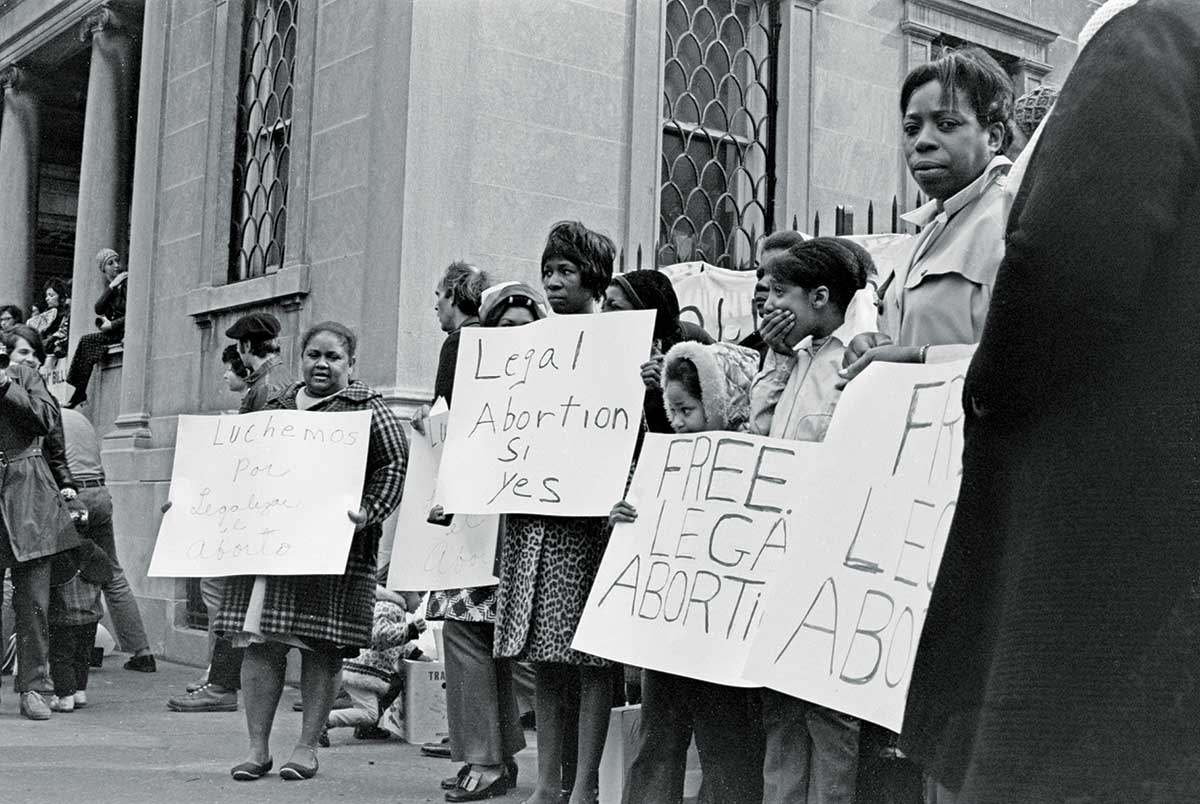
During its four years as an underground provider, the Abortion Counseling Service provided roughly 3,000 abortions annually. It comprised an ever-changing number of 20 to 25 volunteers and some paid workers. The Service originally connected people seeking abortions with real doctors, and some men who claimed to be doctors who could do the procedures, but later the women of Jane learned to do the procedures as a way to ensure that they could care for more women and provide holistic, educational experiences.
The vision of the Abortion Counseling Service was simple: to ensure that all who needed abortions were able to get them safely and affordably, and hopefully learn a little something about their bodies along the way. Some of the women of Jane were inspired to get involved because of their own experiences, either of mistreatment during their abortions or what they witnessed when supporting a friend seeking care.
People found Jane through word of mouth, flyers on streetlamps, college bulletin boards, and referrals from religious leaders and sympathetic medical providers who wouldn’t offer abortion services in their own clinics. “Pregnant? Call Jane,” the flyers read. Those in need of Jane’s services called the phone number listed on the flyer, and in the early days, Jane members would listen to the callers’ stories and assess whether or not they could be helped. Later, Jane purchased an answering machine, and callers would leave a message explaining their situation in hopes that a stranger would call back.
When a Jane called back, they would listen to their clients thoughtfully and assess what support they needed—never pushing abortion or any option on a woman. The women who called Jane were encouraged to talk about all of their pregnancy experiences, and in turn The Service educated women about their bodies and the abortion procedure itself. The women Jane cared for were fully involved in their abortions.
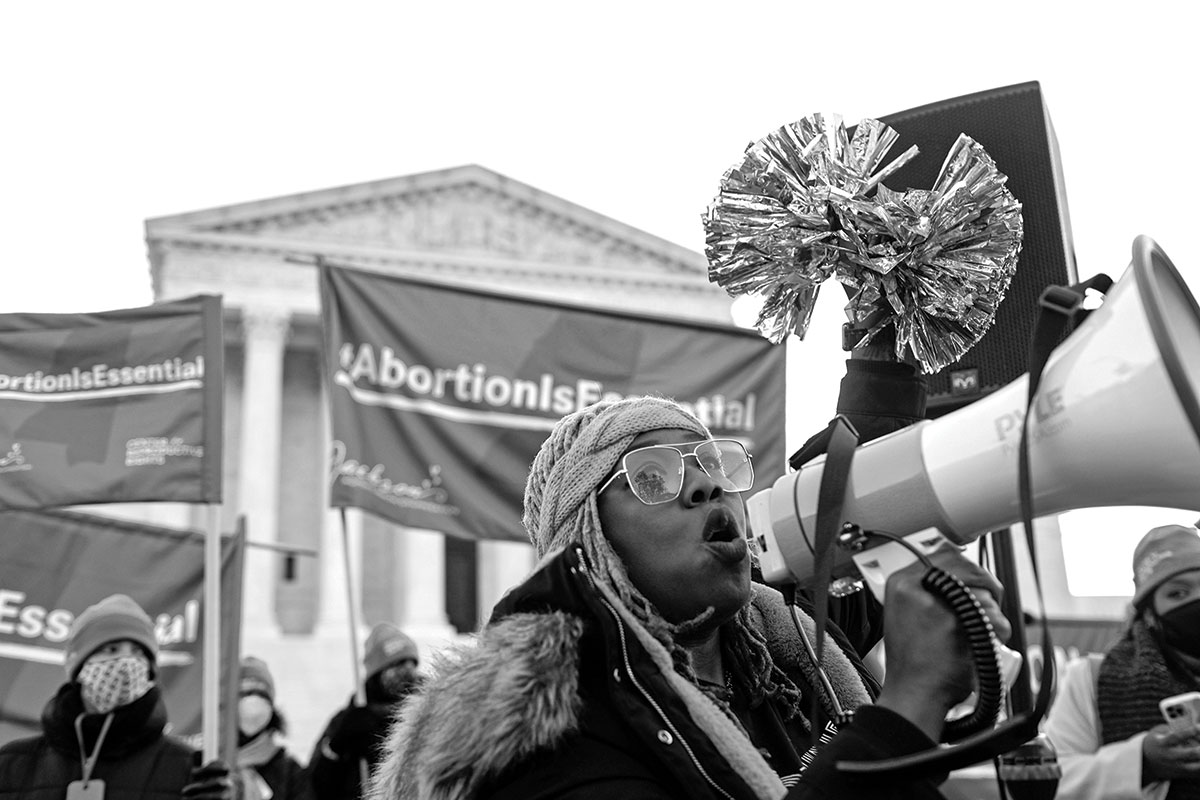
Sakinah was in Jane for a year and a half. She started out as a Call Back Jane, doing intake for the women who wanted abortions, before eventually assisting with the procedures. As she commuted back and forth to The Front, her transportation costs began to add up. She enjoyed counseling women in person, so the other Janes suggested a solution: Her South Side home would become one of the Fronts, and she could counsel women from there.
This change helped alleviate some of the financial strain, but it also brought a whole new set of risks, because women were suddenly coming to her home—a home that she shared with her three kids, her husband, and the young adult daughter of a family friend. Still, when we asked Sakinah whether there were any risks she refused to take, she responded, without missing a beat: “None.”
Sakinah’s home was full of people seeking abortions three days a week. They’d take the elevator to the 10th floor of her high-rise building and enter her three-bedroom apartment. While there was ample space for privacy, abortion support quickly became a family affair. On a few occasions, Sakinah arrived at the house a little late, and her eldest daughter, who was 10 years old, passed out vanilla sandwich cookies and strawberry- and grape-flavored Kool-Aid, then picked up the intake index cards from the women who were waiting patiently in a circle. “These are women that are in need of help,” she’d explained to her daughter, “and Mommy’s there for them.”
Sakinah said she never felt any fear about running the Abortion Counseling Service out of her home until one day when she was returning to her apartment with her daughter in tow. As they walked into the building, they were followed by another woman.
“Hi,” the woman said. Sakinah replied hello politely and kept walking.
“You don’t remember me, do you?” the woman inquired. Sakinah wasn’t going to admit to anything and said she didn’t.
“I owe you. I owe Jane.”
“Oh, OK, that’s fine,” Sakinah replied, quietly relieved, as her daughter looked up at her, recognizing the name Jane as part of her mother’s work.
“What apartment are you in?” the woman asked. She had been in Sakinah’s home but couldn’t remember which apartment it was.
Sakinah told her—and then the woman left. “She slid under the door every week $10 until she paid $100,” Sakinah said. “Those are the kind of women that we were dealing with. We were trusting them, and they were trusting us. She didn’t have to do that, but her gratitude was so intense that she wanted to.”
During the counseling, the women Sakinah cared for would sit on the deep, dark-purple shag couch or the matching shag rug. The whole living room was decorated in shades of purple, with small black block tables, rattan throne chairs, and a Parsons table behind the couch. A record player sat in the corner with the family’s vinyl collection and a stacked television set. “We were young and enjoying ourselves. Life was still going on,” Sakinah said. She knew that her home made the women feel welcome.
Even as the process became routine, each day and each person was different, and Sakinah gave the women individualized care for their needs. “It might be 10, 20, 30, 40 women depending on the day,” Sakinah recalled. “Your main thing was the connection…the humanity, woman to woman, holding hands, talking, taking their minds away from the process itself, just encouraging: ‘You made a decision, it’s OK, we’re going to get through this.’”
Because Sakinah opened her home to them, the women had the opportunity to meet other women—particularly women of color—who were having abortions and sharing their stories. It was a risk, because the procedure was illegal; nevertheless, Sakinah said, they built camaraderie sitting together on the floor learning about one another. “To me, it was a healing process for them; we talked about the procedure, but we talked about everything before the process, from family relationships to social injustices.”
Sakinah saw firsthand how the ability to sit together and just be open and honest had an impact on women’s abortion experiences—but she also worried: What would happen to her children if she was arrested? That was her biggest fear.
Still, she maintains there were no risks in Jane that she wouldn’t take.
On the afternoon of May 3, 1972, the police raided the service. They had been notified by a family member of a woman seeking an abortion and promptly arrested the Jane members at that site. The “Abortion 7”—Abby, Diane, Judith, Madeleine, Martha, Sheila, and Susan—were held in jail overnight, and each was charged with 11 counts of abortion and conspiracy to commit abortion, with possible sentences totaling up to 110 years in prison. They were eventually released on a $2,500 bond—nearly $19,000 in 2024 dollars. (The charges were ultimately dropped.)
Despite the arrests, Sakinah and the other women of Jane continued providing abortions until the Roe v. Wade decision came down from the Supreme Court, granting a constitutional right to abortion. But even then, they didn’t stop. After abortion became legal in January 1973, Sakinah and the other Janes were recruited to work at a new, aboveground abortion clinic, Midwest Population Center. Sakinah jumped at the chance. “I wasn’t ready to let it go,” Sakinah recalled, “and now I have an income that’s legally on the books.”
Popular
“swipe left below to view more authors”Swipe →For the next few years, Sakinah worked at a number of clinics, doing everything from counseling to advertising, taking many of the skills that she learned from The Service with her to create cohesive systems of care for patients, until eventually she found herself in charge of her own clinic. She had been working at a small facility owned by a doctor with one procedure table and a few recovery chairs when an abortion provider was murdered in California. When the doctor’s wife pressured him to stop providing abortions, Sakinah took over running the clinic. She opened more procedure and recovery rooms, hired a few doctors as contractors, and began providing abortions full-time.
The work wasn’t without its challenges: White antiabortion protesters followed her to her new clinic, shouting her name over the bullhorn. But she wasn’t deterred. Much like the living room counseling Sakinah did with Jane, this was a family affair. Her eldest and youngest daughters ran several of the clinics, and Sakinah’s son did the marketing. Once Sakinah’s youngest daughter went outside to the white protesters to tell them to leave. “After they saw we had security, they never did show up again,” Sakinah said.
In time, Sakinah created SABS Medical Group, named with the initials of Sakinah and her three children, and ran several abortion clinics on the South Side of Chicago. The group’s staff was diverse and dedicated; Sakinah recalled how one Black woman doctor would make the rounds between the abortion clinics and the other ob-gyn patients they had to see, sometimes staying as late as 11 at night to make sure that every patient was seen.
SABS Medical Group thrived for 10 years, but eventually the stresses of the crack epidemic that shook Black communities across the country, including Chicago’s South Side, changed things for her. “Grandmothers were coming in with the grandchildren they were raising who were 13 or 14 and were pregnant,” she explained. “In counseling, the whole initiative was that you were never there to make a decision [for someone]. I found myself not necessarily pushing, but feeling so terrible for the grandmother that was raising [the children] because either the dad was in jail or the mother was on crack or vice versa.”
Sakinah felt for the young girls, most of whom said they wanted a baby because they wanted someone to love, but she had a hard time separating her compassion for the girls from her empathy for the grandmothers. As she burned out, she realized she could no longer offer the abortion services in the way she wanted to. She closed the clinics and switched fields to care for people experiencing addiction.
Still, even all these decades later, Sakinah’s contributions to abortion liberation endure.
Sakinah was one of two Black women we interviewed who volunteered with Jane. We believe their presence made a major difference for the women of color in particular who sought abortions through The Service. We know from our own experiences that being in the presence of other Black women in an otherwise white-dominated space or risky situation can put us at ease, because often we have only each other.
We share Sakinah’s story not only to write her, and others like her, back into the annals of abortion history, but also to show how women of color have always been part of the movement for abortion liberation. To overlook our contributions is to tell incomplete stories and to prevent other people of color from seeing themselves in this work, when we have been here all along.
Of all the women who volunteered with Jane, Sakinah says, she was the only one who stayed in abortion provision over the long term, for nearly two decades. Even after Roe, she understood that her work was not over. “I was just following the process of Jane,” she told us, “because it never left me.”
Hold the powerful to account by supporting The Nation
The chaos and cruelty of the Trump administration reaches new lows each week.
Trump’s catastrophic “Liberation Day” has wreaked havoc on the world economy and set up yet another constitutional crisis at home. Plainclothes officers continue to abduct university students off the streets. So-called “enemy aliens” are flown abroad to a mega prison against the orders of the courts. And Signalgate promises to be the first of many incompetence scandals that expose the brutal violence at the core of the American empire.
At a time when elite universities, powerful law firms, and influential media outlets are capitulating to Trump’s intimidation, The Nation is more determined than ever before to hold the powerful to account.
In just the last month, we’ve published reporting on how Trump outsources his mass deportation agenda to other countries, exposed the administration’s appeal to obscure laws to carry out its repressive agenda, and amplified the voices of brave student activists targeted by universities.
We also continue to tell the stories of those who fight back against Trump and Musk, whether on the streets in growing protest movements, in town halls across the country, or in critical state elections—like Wisconsin’s recent state Supreme Court race—that provide a model for resisting Trumpism and prove that Musk can’t buy our democracy.
This is the journalism that matters in 2025. But we can’t do this without you. As a reader-supported publication, we rely on the support of generous donors. Please, help make our essential independent journalism possible with a donation today.
In solidarity,
The Editors
The Nation
